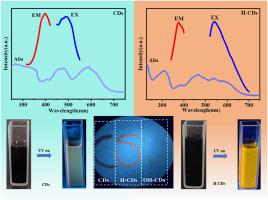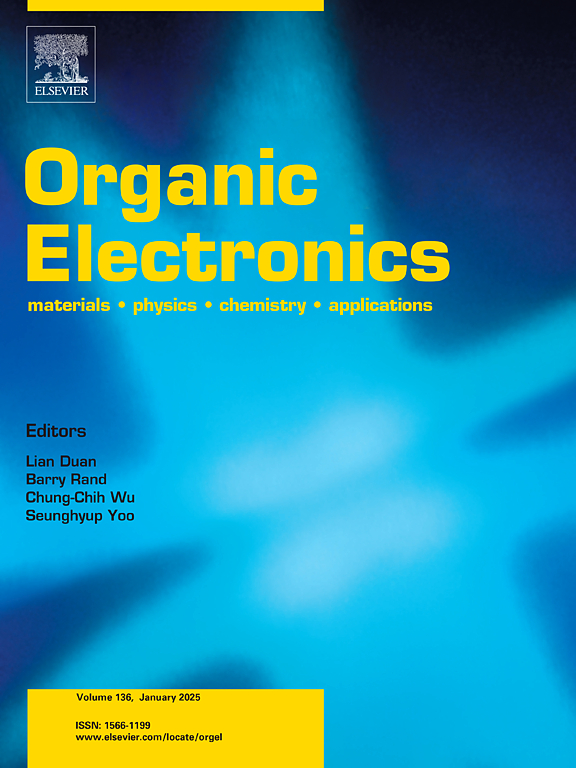氢离子触发碳点固态荧光双重防伪
IF 2.6
4区 工程技术
Q3 MATERIALS SCIENCE, MULTIDISCIPLINARY
引用次数: 0
摘要
开发具有可调谐和可逆荧光的发光材料仍然具有挑战性,因为它需要能够在精确刺激下切换发射状态的稳定,响应和多功能系统。本文以2-苯胺-3-甲基-6-(二丁胺)氟烷烃为原料制备了碳量子点(CDs)。光学表征表明,由于表面氧化官能团主导低能跃迁,母体CDs呈现青色荧光。有趣的是,在各种酸的刺激下,这种荧光现象可以变成黄色,无论在水溶液或固体状态。这可以用H+将氧化的表面基团(如硝基)还原为氨基来解释,从而产生新的发射陷阱。在此基础上,展示了一种具有先进防伪和双重加密功能的可逆双开关发光油墨。本文章由计算机程序翻译,如有差异,请以英文原文为准。

H+-triggered solid-state fluorescence of carbon dots for dual anti-counterfeiting
Developing luminescent materials with tunable and reversible fluorescence remains challenging, as it requires stable, responsive, and versatile systems capable of switching emission states under precise stimuli. Herein, we prepared carbon quantum dots (CDs) by using 2-aniline-3-methyl-6-(dibutylamine) fluoroalkane as raw material. The optical characterization showed the parent CDs presented a cyan fluorescence resulted from the surface oxidative functional groups dominating the low-energy transitions. Interestingly, stimulated by various acids, this fluorescence phenomenon can be changed into yellow, no matter in aqueous solution or solid state. It can be explained by the fact that H+ reduces oxidized surface groups such as nitro to amino groups, creating new emissive traps. Based on this, a reversible dual-switch mode luminescent ink was demonstrated for advanced anti-counterfeiting and dual encryption.
求助全文
通过发布文献求助,成功后即可免费获取论文全文。
去求助
来源期刊

Organic Electronics
工程技术-材料科学:综合
CiteScore
6.60
自引率
6.20%
发文量
238
审稿时长
44 days
期刊介绍:
Organic Electronics is a journal whose primary interdisciplinary focus is on materials and phenomena related to organic devices such as light emitting diodes, thin film transistors, photovoltaic cells, sensors, memories, etc.
Papers suitable for publication in this journal cover such topics as photoconductive and electronic properties of organic materials, thin film structures and characterization in the context of organic devices, charge and exciton transport, organic electronic and optoelectronic devices.
 求助内容:
求助内容: 应助结果提醒方式:
应助结果提醒方式:


